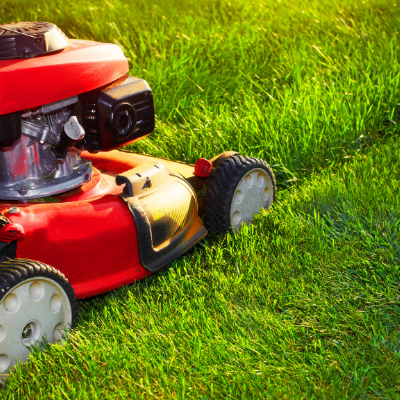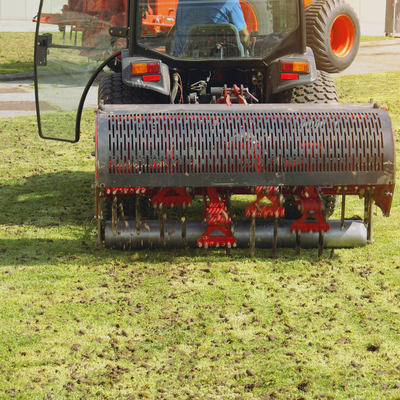Winter is on its way. For most of the country, fall signals the end of the growing season and end to all that yard work. But here, we are blessed with mild winters. Unfortunately, that means we have to worry about and maintain our yards pretty much year-round. Here is a list of helpful tips to get you started on your fall lawn care checklist.
Start Watering
Our rainy season keeps our lawns regularly hydrated from April – August. In the fall and winter is when things start to dry up. If you are on a watering schedule it’s time to increase how much you are watering. A lawn needs at least an inch of water per week. With a well-maintained and automatic irrigation system, you can provide your lawn the water it needs.
Mow Less But Keep Mowing
Most of our lawns are composed of warm-season grasses. Warm-season grasses are grasses that do their growing in the summer. From October through March, warm-season grasses slow down and go dormant. Even though your grass might not seem like it’s growing, you should still mow once in a while. You don’t have to mow as frequently as you did in the summer but you shouldn’t stop. About twice a month is enough to keep your grass at 2 ½ – 3 inches
Mosquito Control
Another downside to having great weather year-round is that it is also ideal weather for Mosquitoes. Our mosquito season is one of the longest in the country and in some places mosquitoes are around all year. As winter approaches, mosquitoes mate and the males die off. The females deposit their last batch of eggs in standing water before hibernating in logs, along river banks, and in buildings.
To avoid a cloud of hungry mosquitoes come springtime, it’s time to take action now. Here are some things you can do to reduce the mosquito population in your yard. Empty anything in your yard that can retain water. That includes flowerpots, birdbaths, tarps, tires, toys, lawn furniture, wheelbarrows, and gutters.
To keep mosquitoes from laying eggs in your water features or animal waterers use mosquito dunks. These dunks contain a bacteria that kills mosquito larvae but is perfectly safe for animals to drink.
Aerate Your yard
Lawns often suffer from both compacted soil and thatch build-up. Compaction reduces water and fertilizer uptake by the grass roots. This lowers a lawn’s tolerance to heat, drought, and diseases. Compacted soil also increases runoff from irrigation or fertilizers and pesticides.
Core aeration works by removing soil plugs from the turf with an aerator. Aeration enhances root growth, breaks up thatch, and establishes healthier grass.
Aeration immediately increases water uptake by the grass and increases its resistance to drought and heat.
The best time to aerate your lawn first depends on what type of grass your yard is made of. For cool-season grasses like Kentucky Bluegrass and perennial rye grass aeration is recommended from mid to late spring and early fall. For warm-season grasses like Bermuda, zoysia, and St. Augustine grass should be aerated from mid-spring to summer.
Ready to Schedule Your Fall Lawn Care Services? Call TLC Turf Master Now!
At TLC TurfMaster Lawn Care we have years of experience dealing with lawns. If you want to relax next year and not have to worry about lawn care then sign up for our lawn care services. Is your lawn looking weak and thin? Ask about our aeration and overseeding services today.
Are you ready for us to help tackle your fall lawn care? Contact us online or by phone at 901-509-9005. Get to know us on a more personal level by following us on Facebook and/or Twitter.
